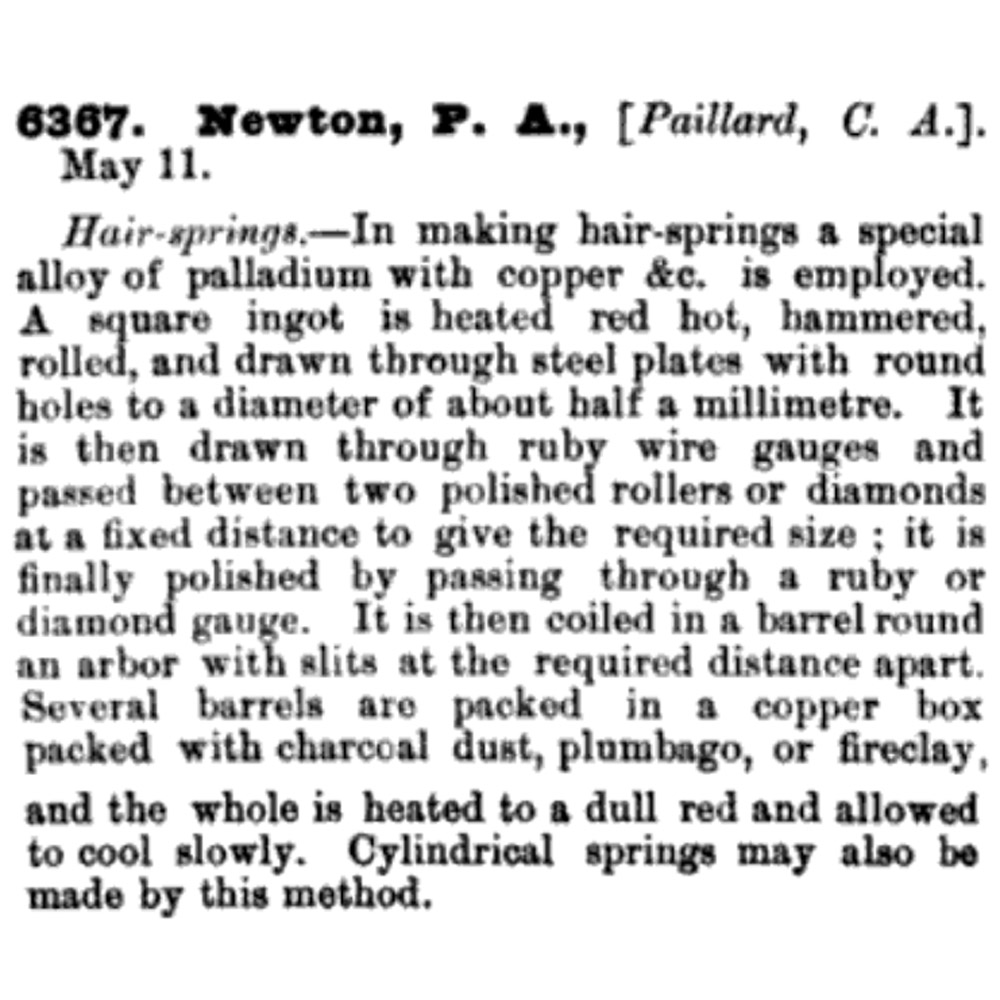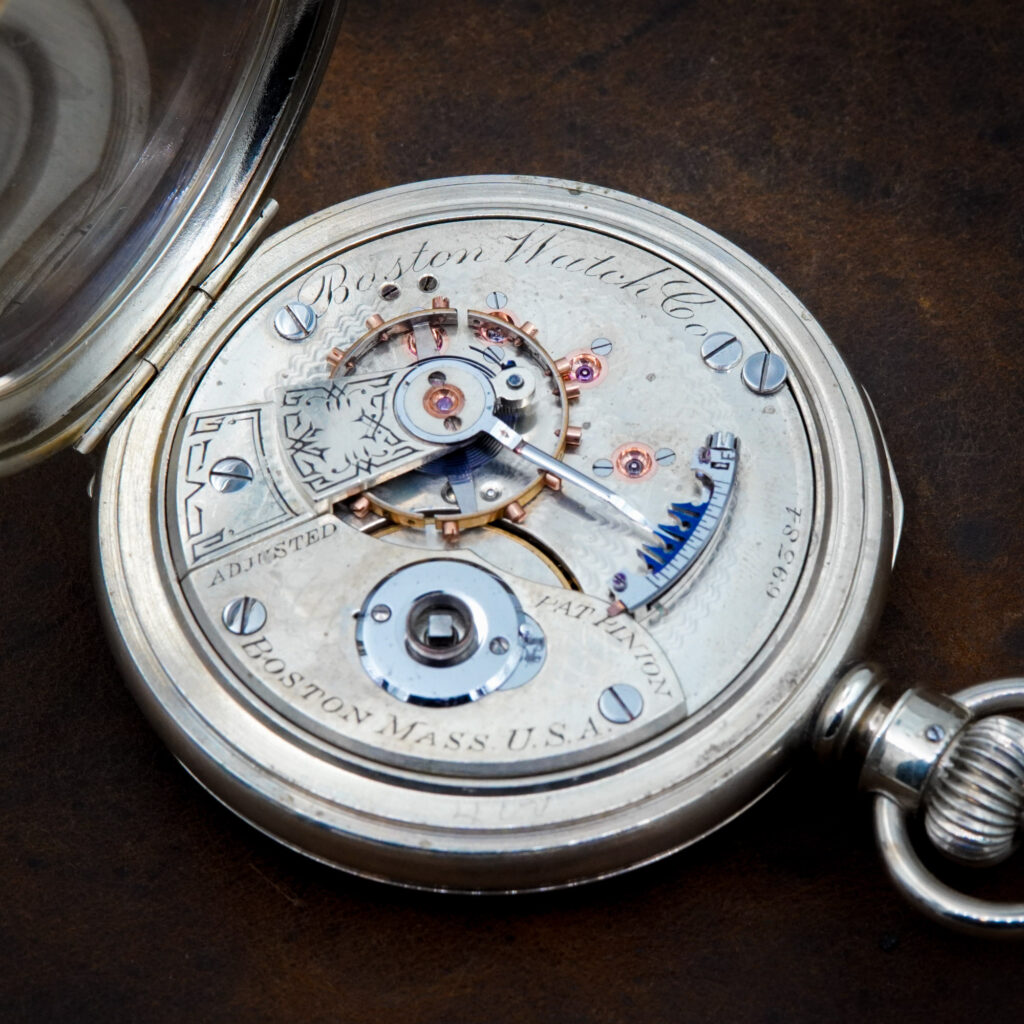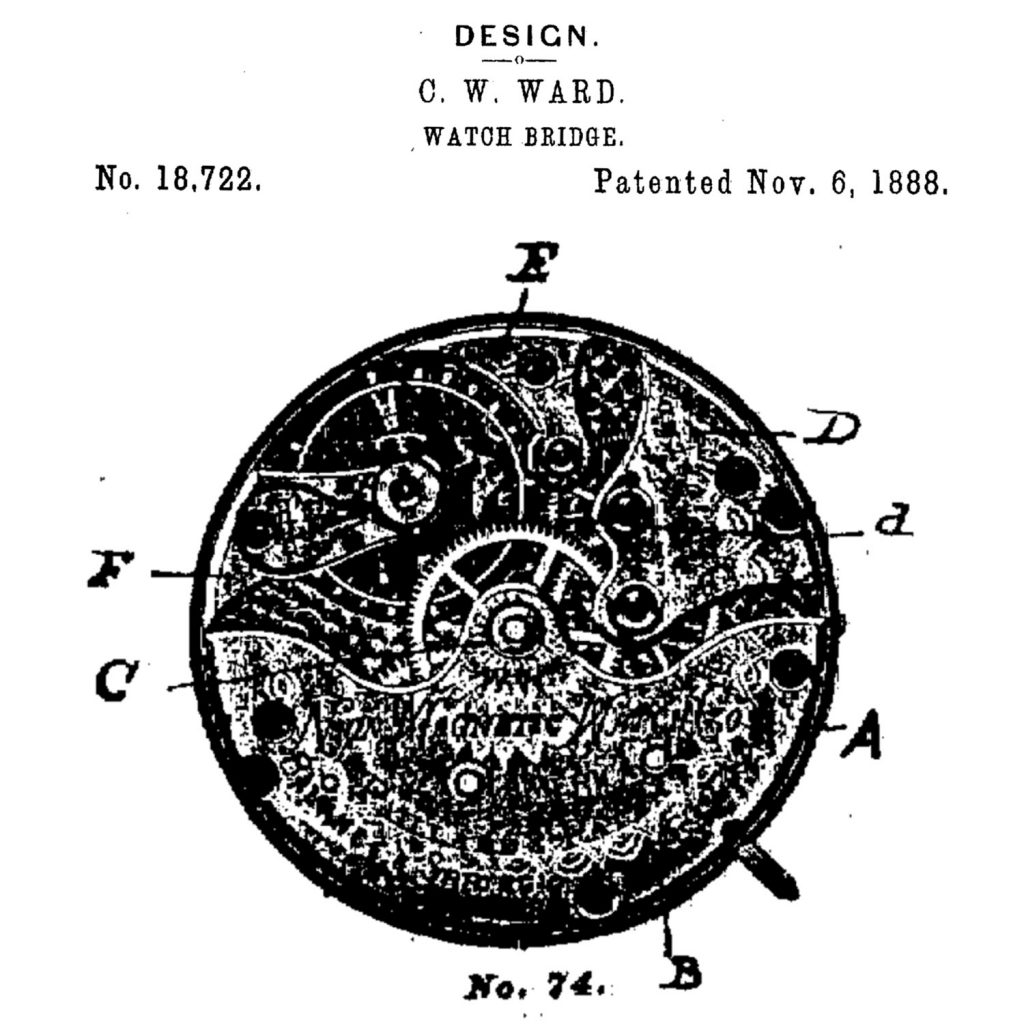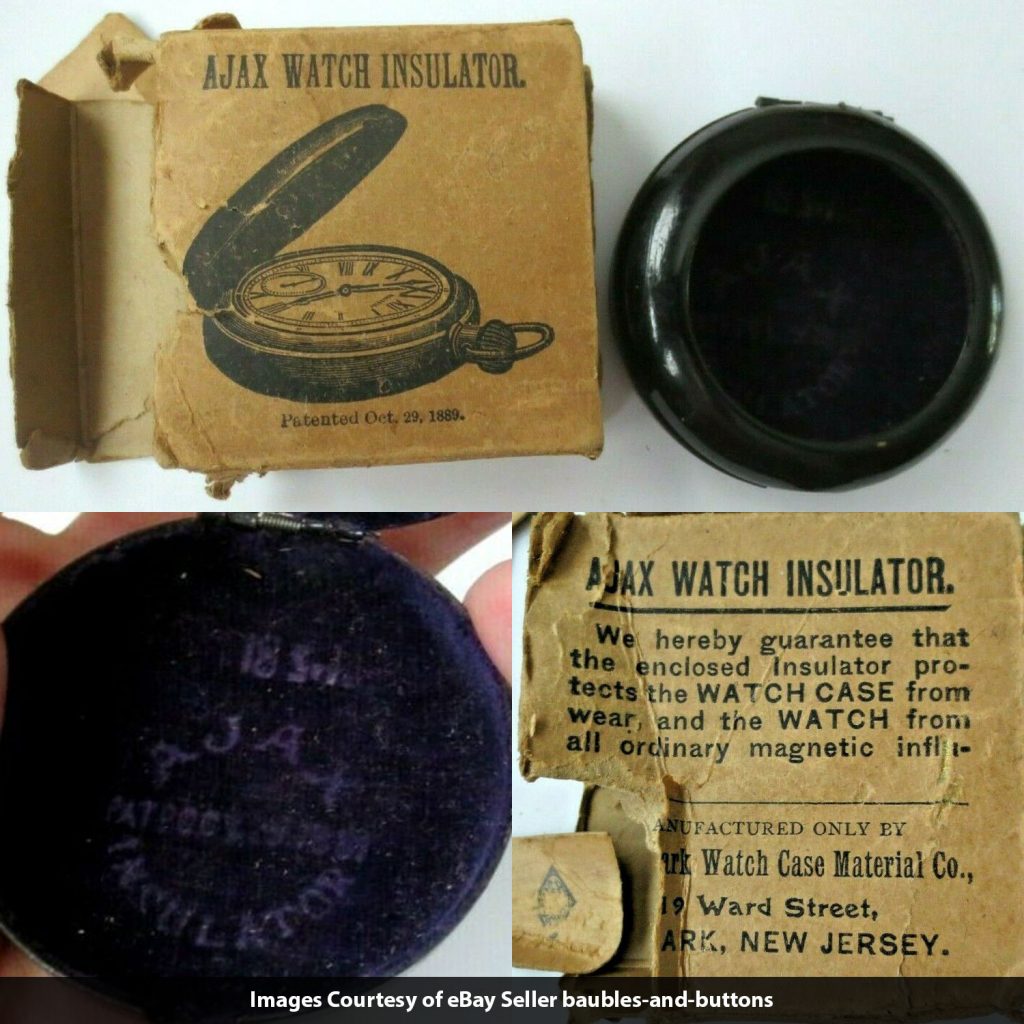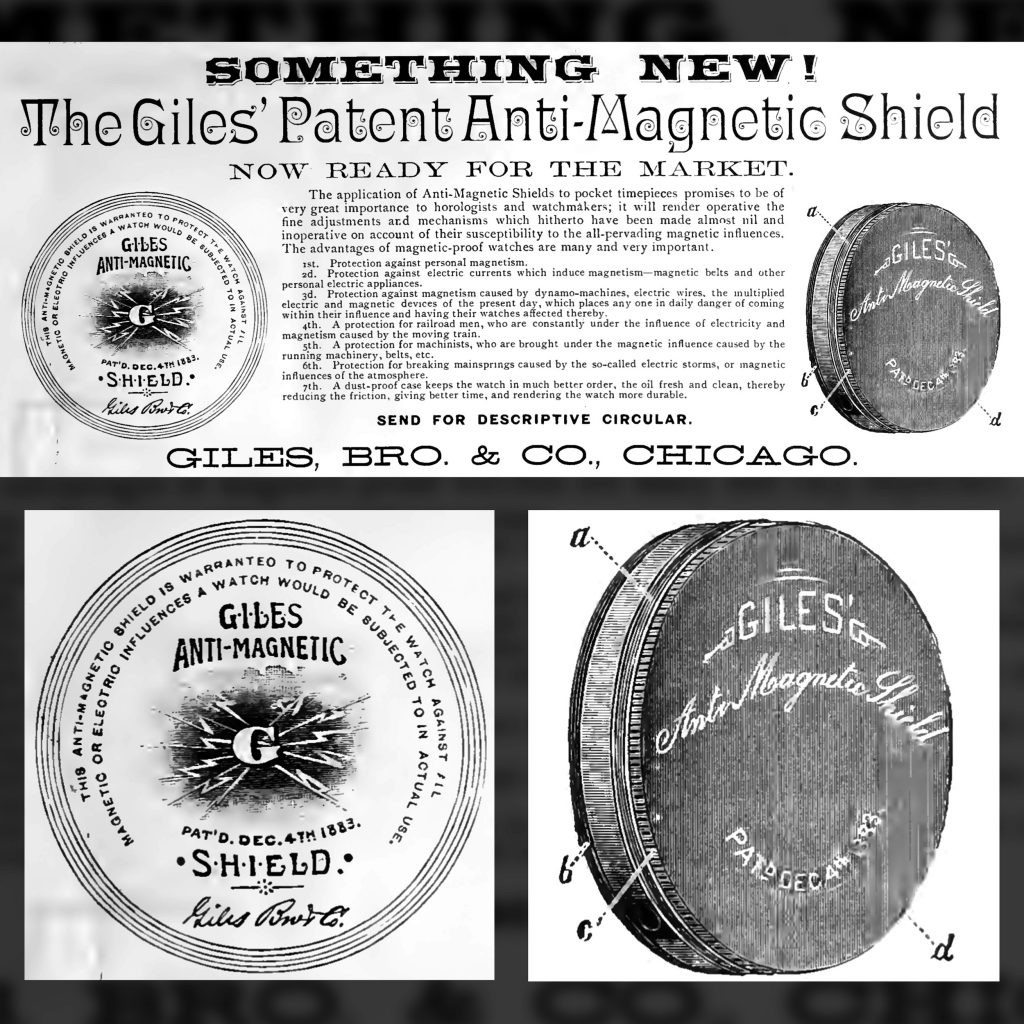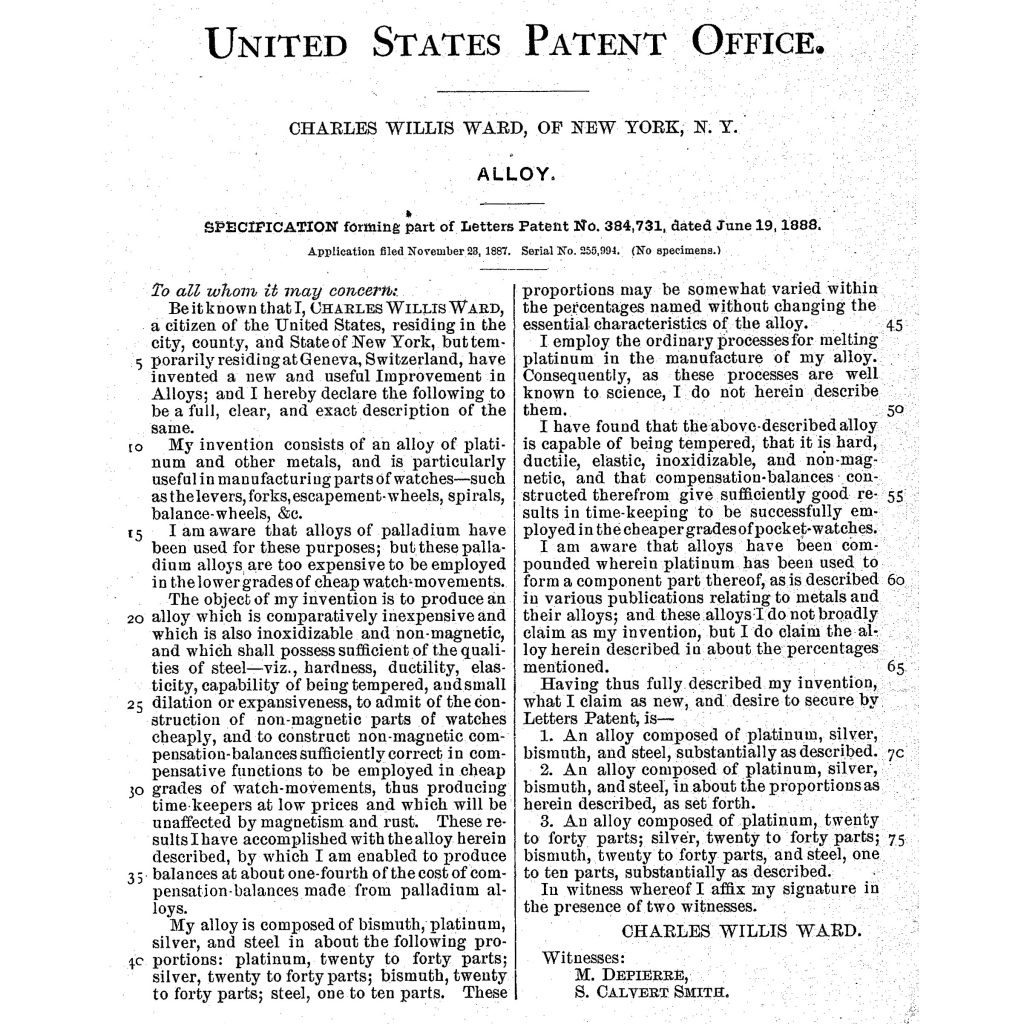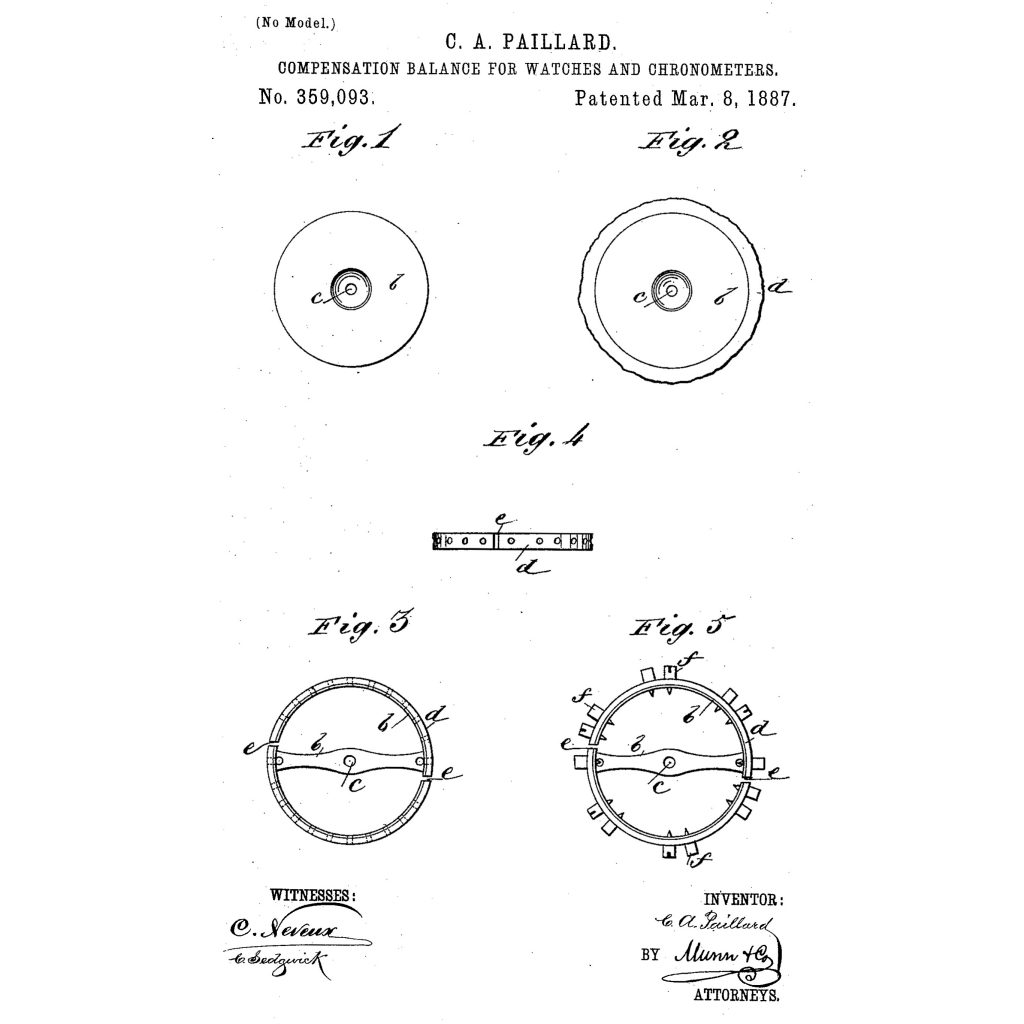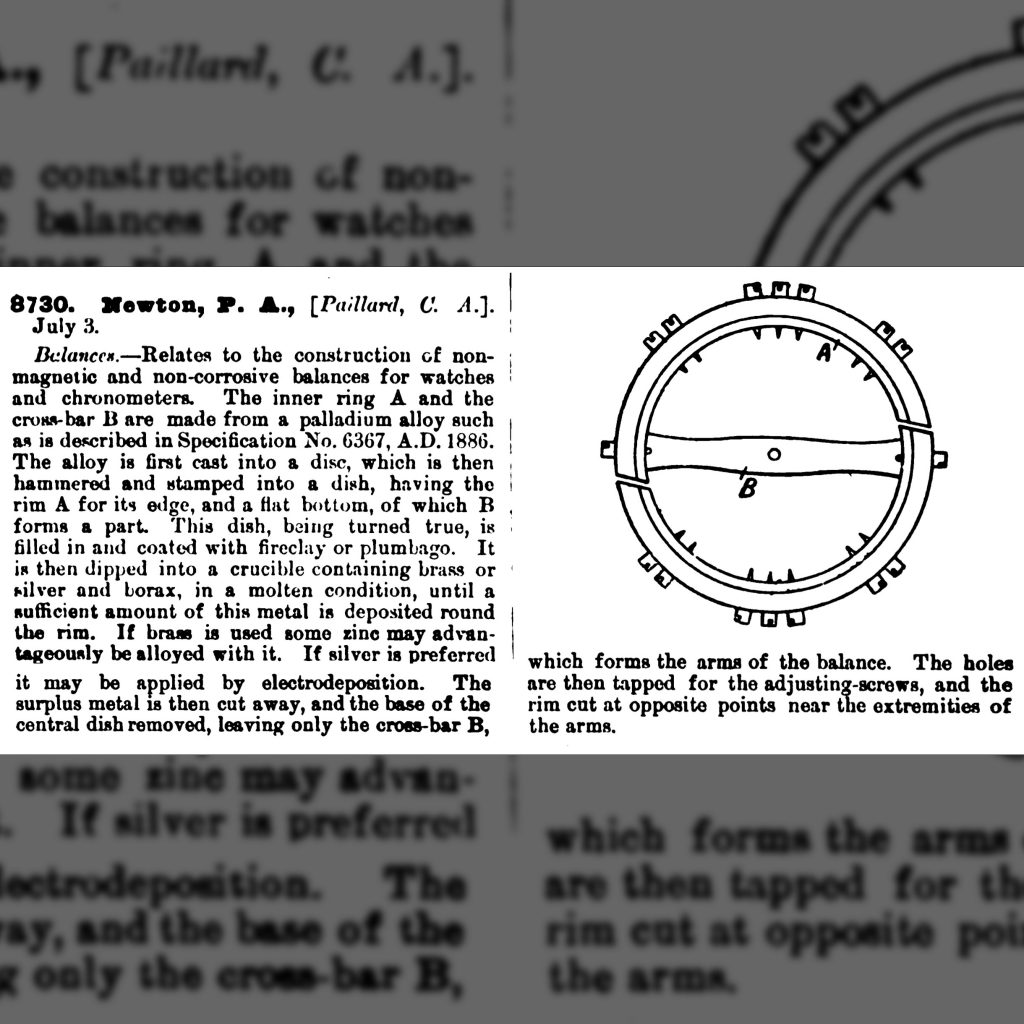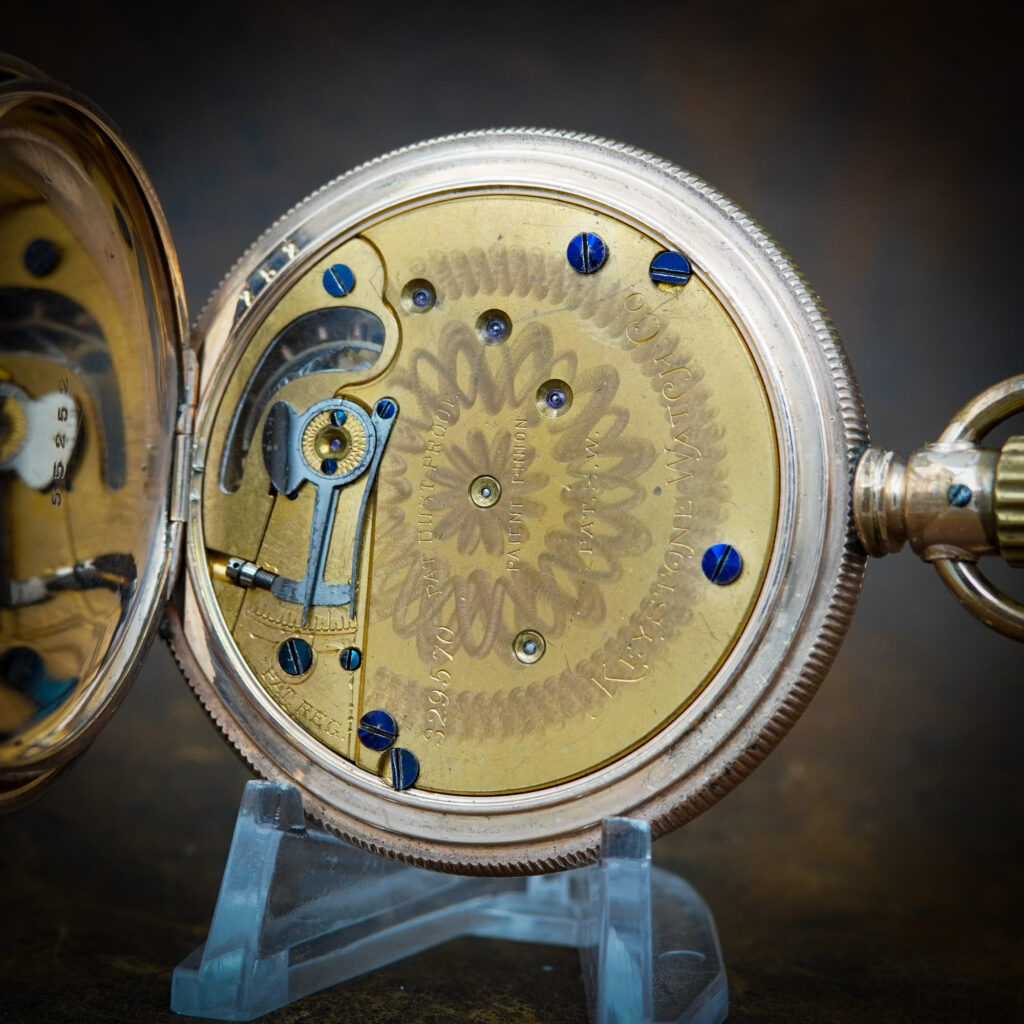
Patents

Boston Watch Co. Private Label Movement #695384 with Goold's Patent Regulator Closeup of Frank C. Goold's Patent Regulator c.1877 "Boston Watch Co." private label manufactured by the Hampden Watch Company..
Pictured: “Watch Bridge” U.S. Patent #D18722 In a move that was rather uncommon for watch manufacturers at the time, the Non-Magnetic Watch Company of America applied for a design patent.
Pictured: “The Giles Patent Anti-Magnetic Shield” Advertisement, The Jewelers’ Circular and Horological Review, 1884 (Unknown Issue) As electricity was being adopted across the globe in the 1880s, the watch industry.
Pictured: U.S. Patent #384,731 Charles-Auguste Paillard received six patents in the United States for his innovative palladium alloys used in watchmaking. Paillard’s alloys were immune to corrosion, did not dilate.
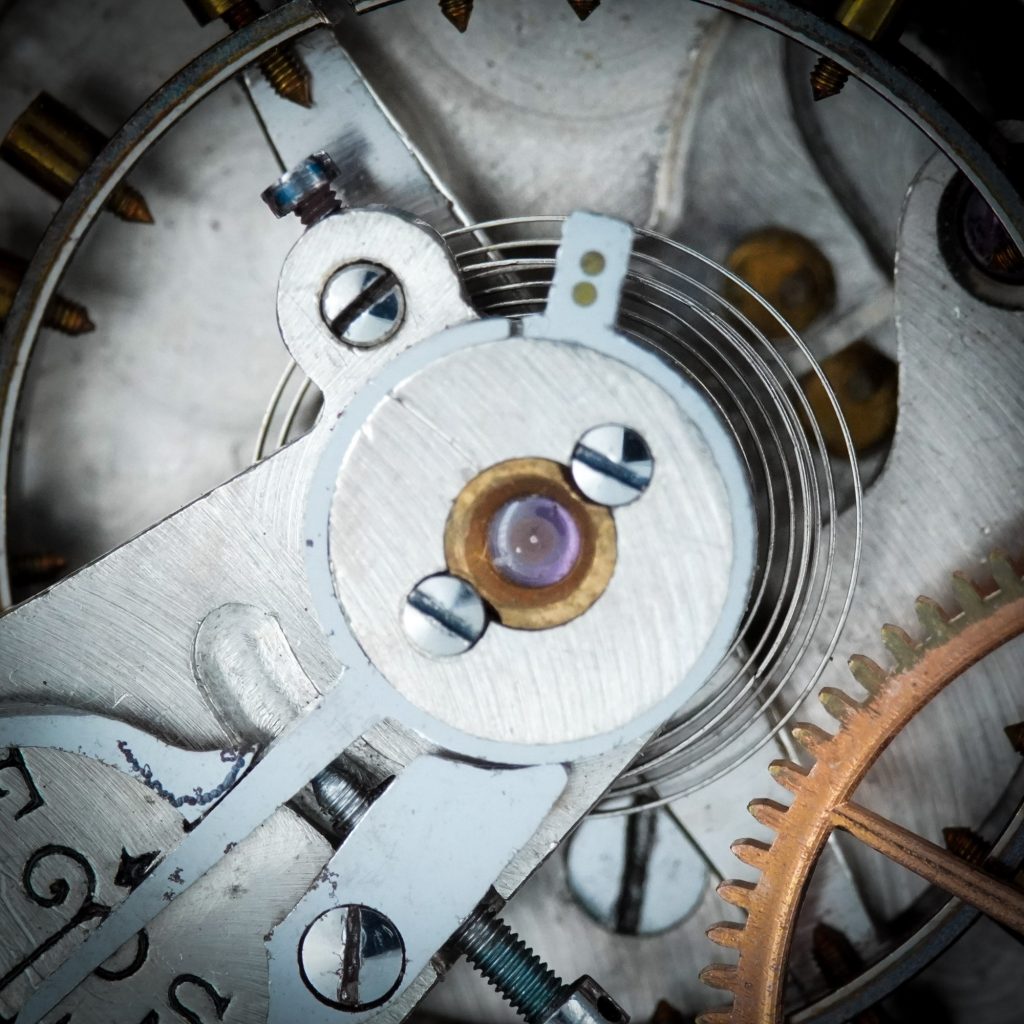
Pictured: C.A. Paillard’s Palladium Compensation Balance U.S. Patent #359093. In addition to seeking patents in Europe, Charles-Auguste Paillard submitted patent applications in the United States to protect the use of.
Pictured: C.A. Paillard’s Palladium Balance Abstract of English Patent #8730. While the most delicate part of a watch to be significantly affected by magnetism and corrosion is the hairspring, the.
